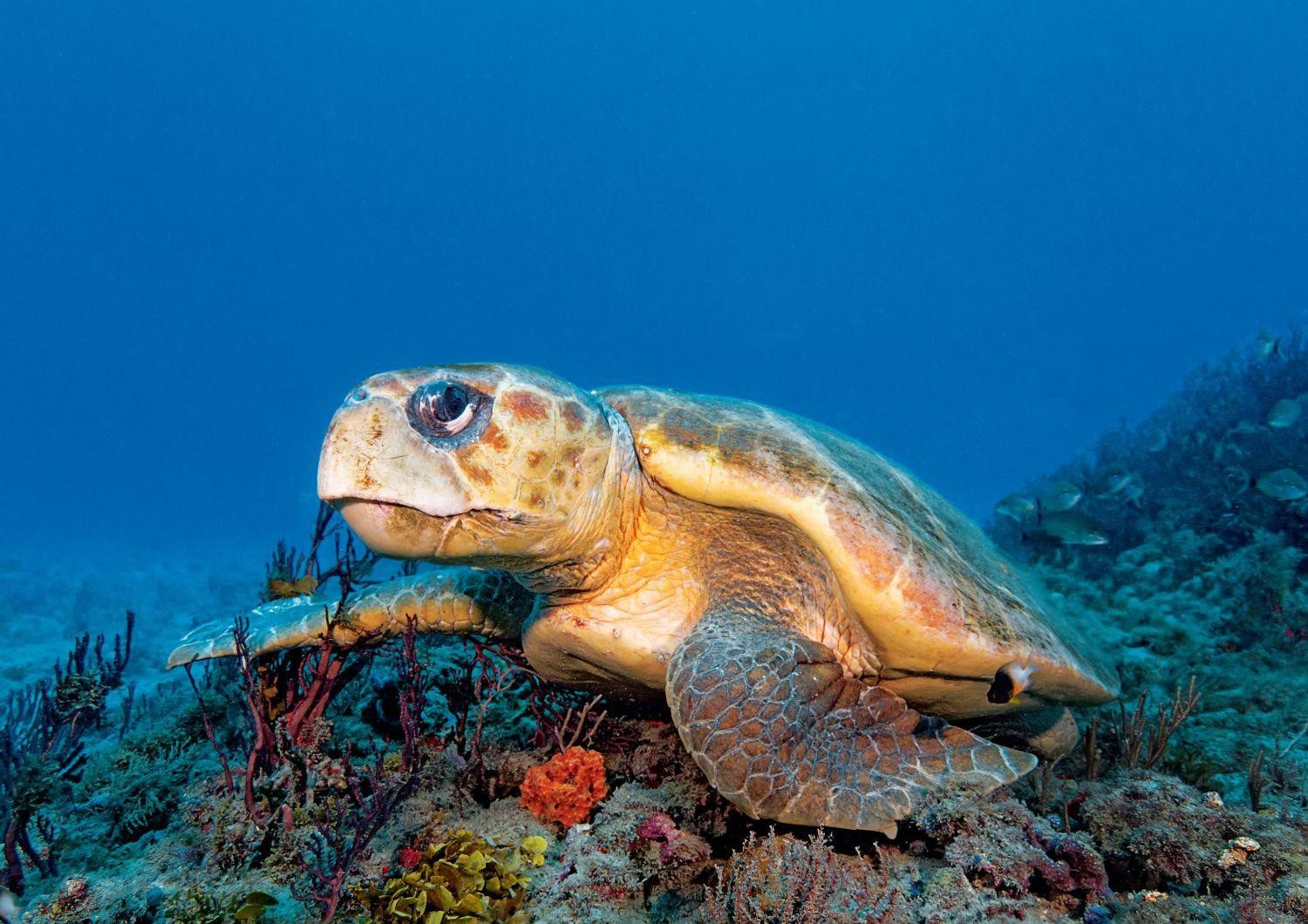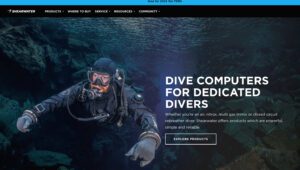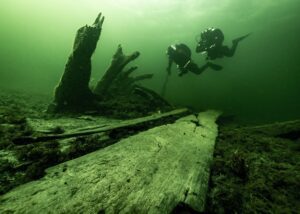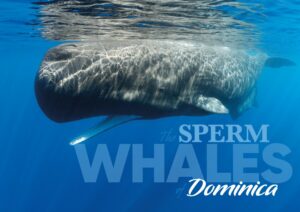Walt Stearns takes us on a voyage of discovery on Palm Beach’s diverse reef systems, and explains what draws him back time and again.
At the risk of sounding presumptuous, I will just come right out and say it – there is no better, or more exciting, place to dive in Florida than the Palm Beach County Coast.
Photographs by Walt Stearns
I can justify this statement based on personal experience gained from decades of diving from one end to the other of this 47-mile-long stretch of coastline, and on the thousands of images I have to show for all this bottom time. I’ve written extensively about the world-class wreck diving and exciting marine life that can be found in these waters, but perhaps the best place to start a tour of the area is with an introduction to the reefs.
Not your typical tropical reef
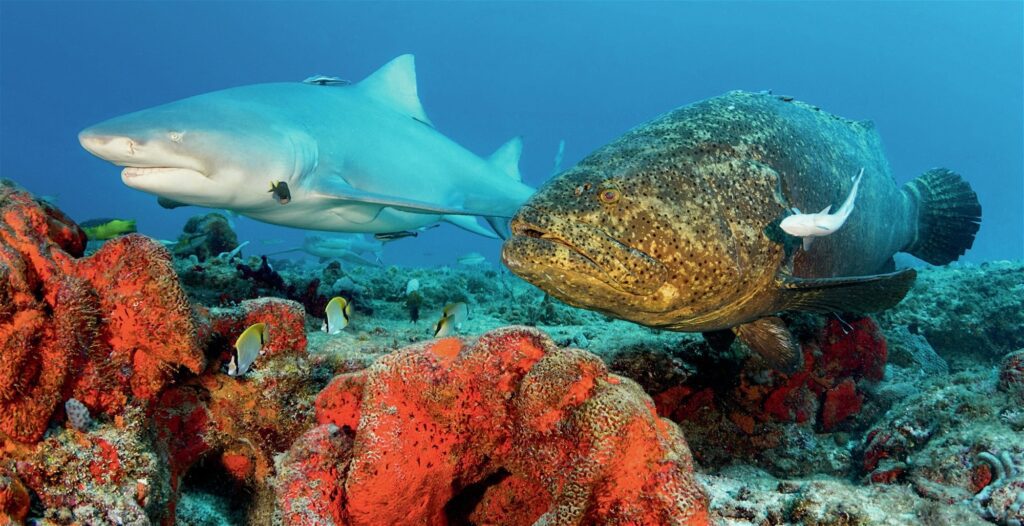
The reefs off Palm Beach Florida aren’t the same as the coral reefs you might find farther south in the Florida Keys, or through much of the Caribbean. While reefs in these other areas are typically created by hard corals, the Palm Beach reef tract was formed almost exclusively by coralline and calcareous algae growth.
Without getting too heavy into the biology and geology, this type of reef formation typically results in elongated barrier-like limestone formations that run parallel to the coast at depths between 45ft and 140ft of water. The submerged ridges that lie off the coast of Palm Beach were formed from centuries of growth and die-off that began at the end of the earth’s last glacial period (ice age) more than 11,700 years ago.
If you were able to peel the ocean away, you would find that nearly all these reef lines follow a linear pattern with a north-south orientation, with individual ridges measuring up to several miles in length, punctuated by areas of sand bottom. The most-dramatic portion of these elongated escarpments generally fall on the western side, where their contours take ledge-like profiles that rise above the sand and are indented with deep undercuts. The gaps between the reefs were created by the erosion of ancient rivers when sea levels were far lower than they are today.
Over time as sea levels continued to rise, the simple calcareous organisms that built the reefs occupying the mid-shelf region of the Florida peninsula began to die off. According to geologists, the last significant degree of upward growth ceased around 3,700 years ago. But though created in the distant past, these reefs continue to support a wealth of marine life to this day. In fact, a dive onto a Palm Beach reef reveals a rich array of sponge and soft coral communities, along with a host of fish and bottom-dwelling invertebrates.
From a diving standpoint, the Palm Beach County coastline can be divided into four general areas – Boca Raton, Boynton Beach, Lake Worth and Jupiter. Each of these areas is defined by one of the four navigable inlets along the coast which dive operations use to access the reefs and wrecks that lie a couple of miles offshore.
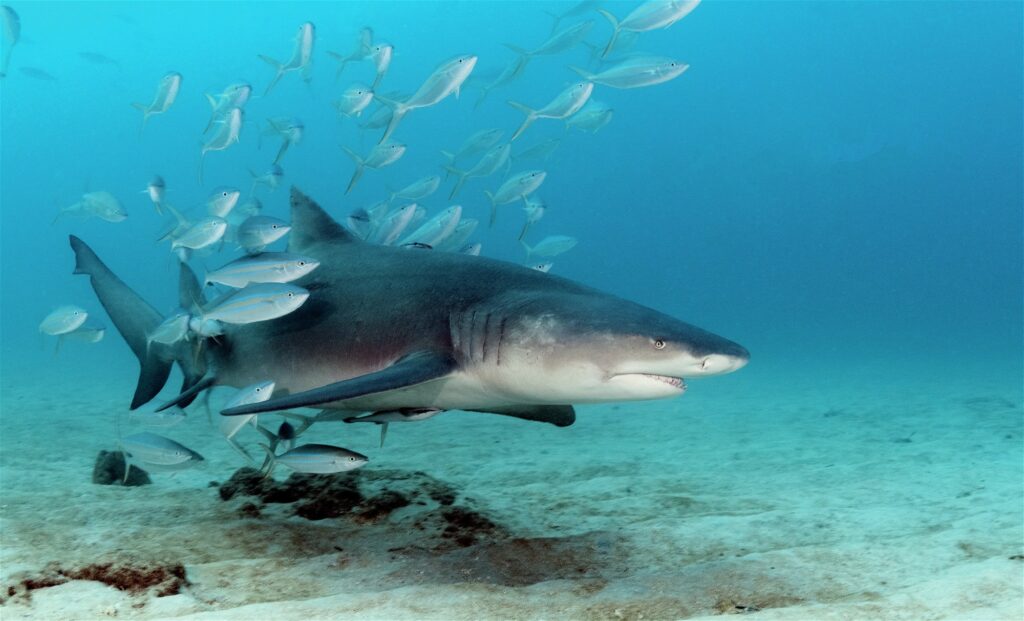
Southern attractions
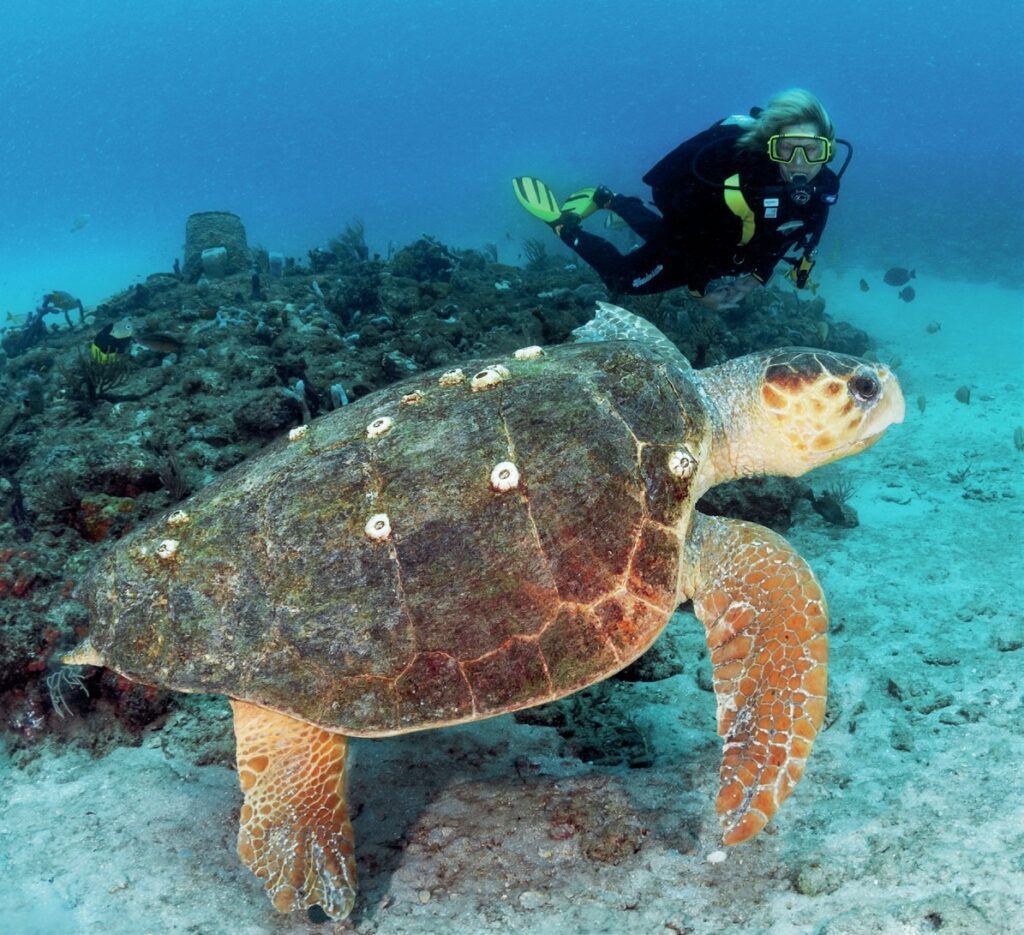
At the southern boundary to Palm Beach County, the Boca Raton Inlet provides access to an assortment of smaller, lowprofile reefs in 30ft to 50ft depths, as well as the first set of pronounced ridge lines, which lie in the 60ft to 70ft depth range, less than two miles from shore. This ridge extends northward to eventually merge with an extensive set of ridges that can be accessed from the Boynton Beach Inlet.
Of the various dive sites in this area, the one that stands out in my mind is the Delray reef system. Lying directly to the east of its namesake town, the reef line runs north virtually unbroken for nearly five miles before terminating in a sandy plain. Like most of the reefs in the area, its westfacing side features pronounced ledges that rise from 5ft to 15ft above the sand, with the uppermost ridge averaging 45ft to 50ft from the surface. Down the eastern side towards the open sea, bottom contours are less dramatic, taking a more-gradual decline to depths of 90ft to 110ft.
The ledge attracts a plenitude of reef fish, including big, bold blue angelfish, swirling schools of spadefish, jacks, grunts and porkfish. And divers can usually count on an encounter with the region’s original signature attraction – big sea turtles.
In Palm Beach waters, sea turtle encounters are the norm, not the exception. Seeing less than two turtles per dive at any time of the year is considered a bad day. The two you will most likely come across are the Atlantic hawksbill (Eretmochelys imbricata), recognizable by its ornate shell and hawkish, hook-shaped snout, and the loggerhead (Caretta caretta). Besides being quite large (adults can weigh close to 500lb), the loggerhead’s most identifiable feature is their large block-shaped heads.
With the arrival of spring, your chances of a turtle sighting go up exponentially, as the Palm Beach coast is not only a major nesting ground for loggerheads but also for green turtles (Chelonia mydas) and leatherback turtles (Dermochelys coriacea). This last one is the hulk of the sea turtle clan, dark grey and black in color, measuring over seven feet in length (head to tail) and weighing 1,000lb or more at full maturity.
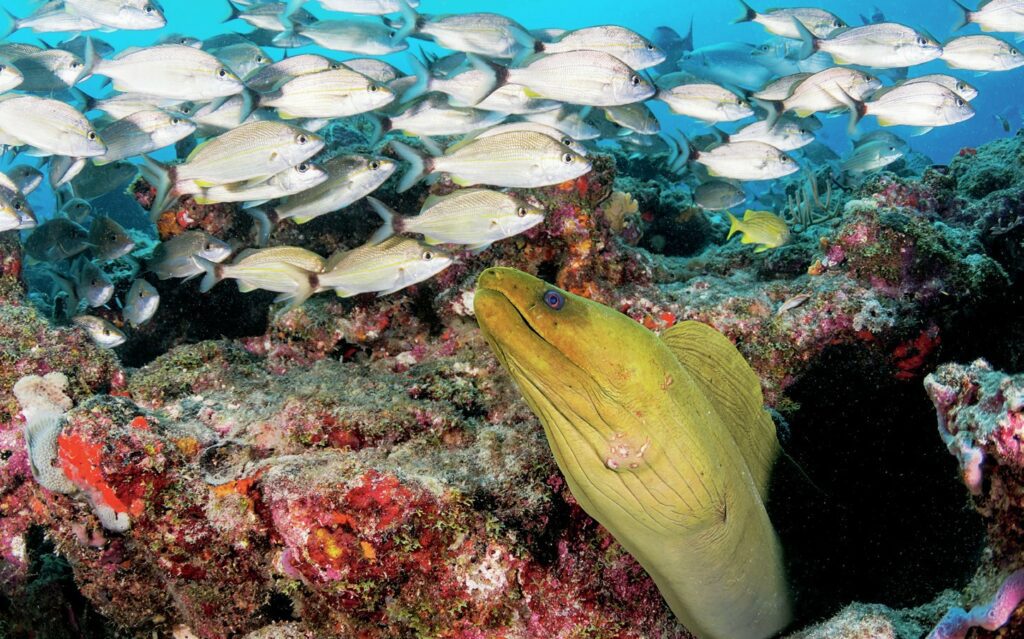
A personal favorite
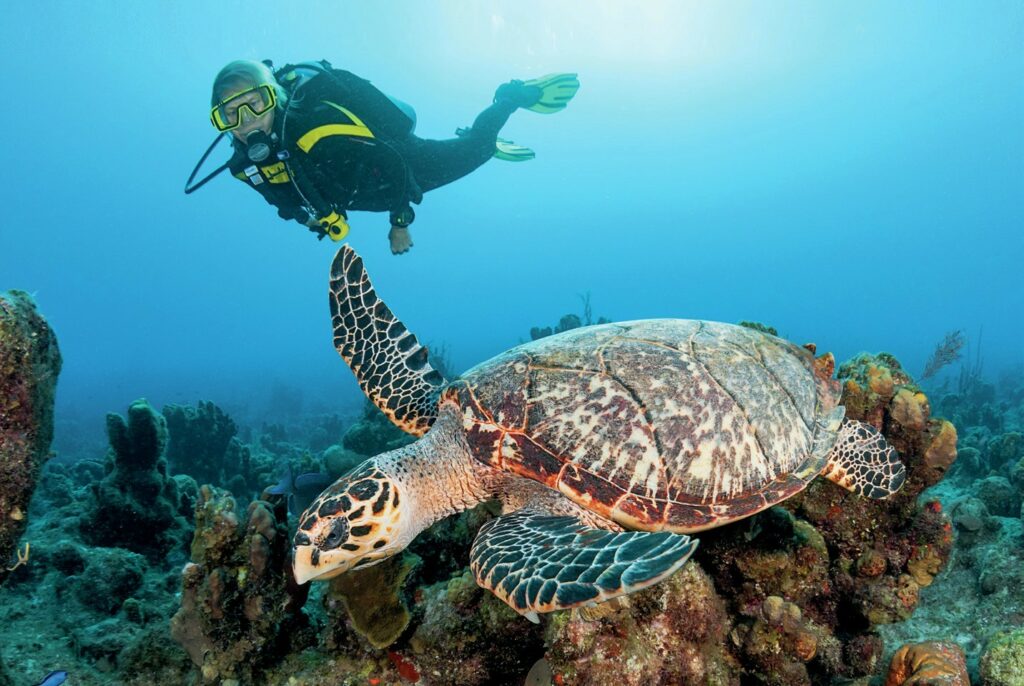
Moving north to the town of Palm Beach itself, the reef track becomes more complex. The limestone ridge line continues as before, but with the gaps between the reef systems becoming far wider in scale. For example, the gap between the formations known as Breakers Reef and Bath and Tennis Reef is roughly 150 feet across, while the span between Bath and Tennis and Paul’s Reef to the south is close to half a mile. As with the southern ledges, the west-facing portion of these formations rise in a continuous series of ledges, undercuts, and crevices, which divers can explore within a depth range of 60ft on the bottom to as little as 42ft on top.
Of the three aforementioned reefs, my personal favorite is Breakers (so named because it is located directly offshore of the Breaker’s Hotel). This site is known for delivering a wide range of marine life encounters. From May to end of August, this moderately-shallow reef can be a stellar local for seeing as many as 15 to 30 adult loggerheads, as well as greens and the occasional hawksbill scattered up and down the reef. In addition to those three, Kemp’s Ridley (a fifth member of the Atlantic’s list of species) are also seen here. The reef is also home to a couple of resident Goliath grouper (Epinephelus itajara).
In addition to nurse sharks, which in my mind are oversized catfish that think they are sharks, Breakers is visited by a considerable number of shark species. My personal viewing list includes lemon, reef, blacktip, spinner, bull, tiger, and hammerhead (both scalloped and greater). One I unfortunately missed out on seeing on 11 February 2020 was a very large 14-foot female (possibly pregnant) great white (Carcharodon carcharias). Not only was this impressive animal seen by two separate groups of divers from two separate boats as it casually swam past, there is also a video to prove it.
This is by far not the first in stranger things sighted at Breakers. In the past five years, there have been at least eight different encounters with sawfish and two with whalesharks. But the icing on the cake was a moderately large American alligator resting on the bottom, which was seen by a small group of divers during a morning drift dive in late-July 2010.
Blame it on the Gulf Stream
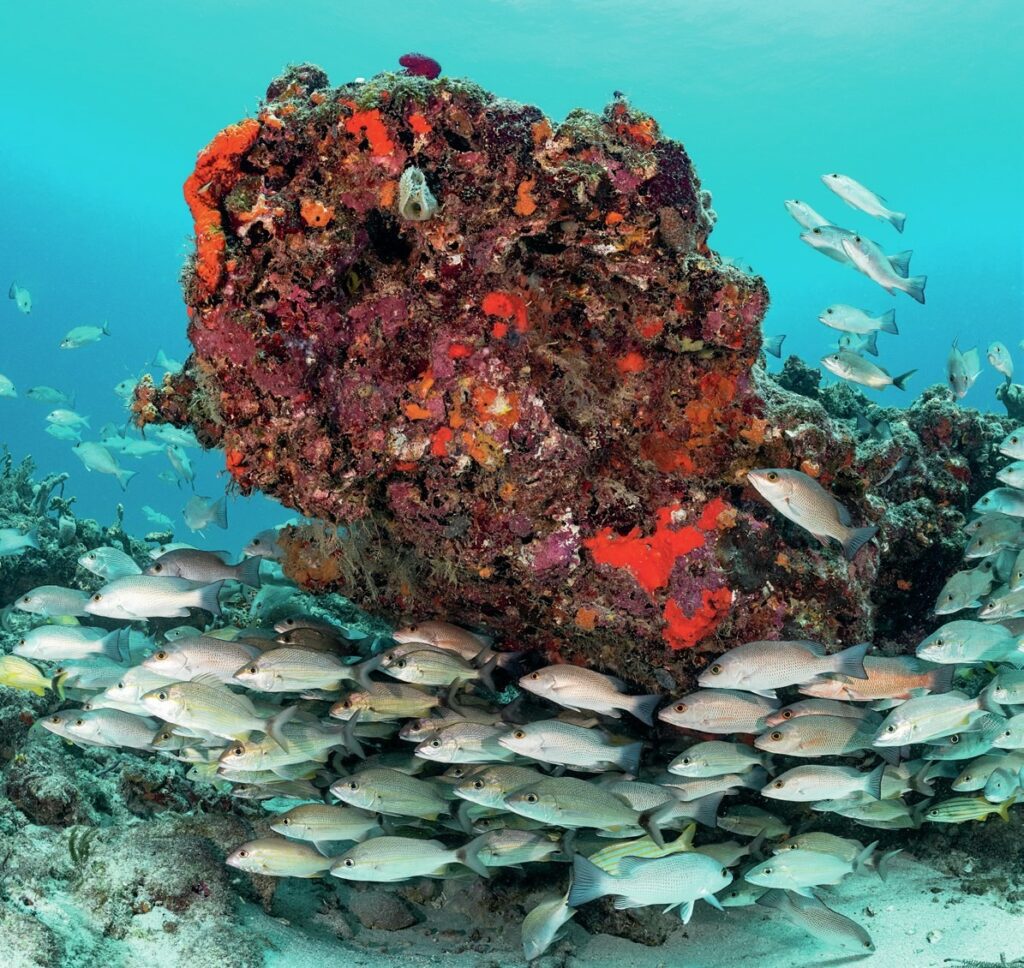
While I don’t have an answer regarding the presence of an alligator on an offshore reef, the primary element that makes this portion of the Florida coast so favorable for attracting a large variety of marine life is the presence of the Atlantic’s largest ocean current — the Gulf Stream.
The reef system that skirts the Palm Beach Coast sits atop a slender section of the Eastern US Continental shelf. Between Boca Raton and West Palm Beach, the shelf is barely six miles wide, and this same portion of the coast makes a gradual curve eastward into the Florida Straits. Due to this geological quirk, the Gulf Stream is diverted westward on its northbound journey through the Florida straits, sweeping closer to the coast than anywhere else in North America.
The Gulf Stream pushes a steady flow of clean, warm water over most of the outer to mid-shore reefs in the Palm Beach area, boosting their vitality and bringing underwater visibility that can rise into the 80 foot to 100 foot range.
Between the close presence of both the Gulf Stream and the deep open Atlantic so close to shore, the reefs are a natural corridor for a variety of large pelagic creatures, including sharks.
Rather than fight the currents, most Palm Beach dive operators prefer to go with the flow. Drift diving is the norm here, and it is a skill that is easily mastered by most. After making a live boat entry, divers let the currents do the work and are then picked up at the end of the dive with no need to swim back and look for an anchor line. In my mind, exploring these reefs would be a lot less enjoyable without the current.
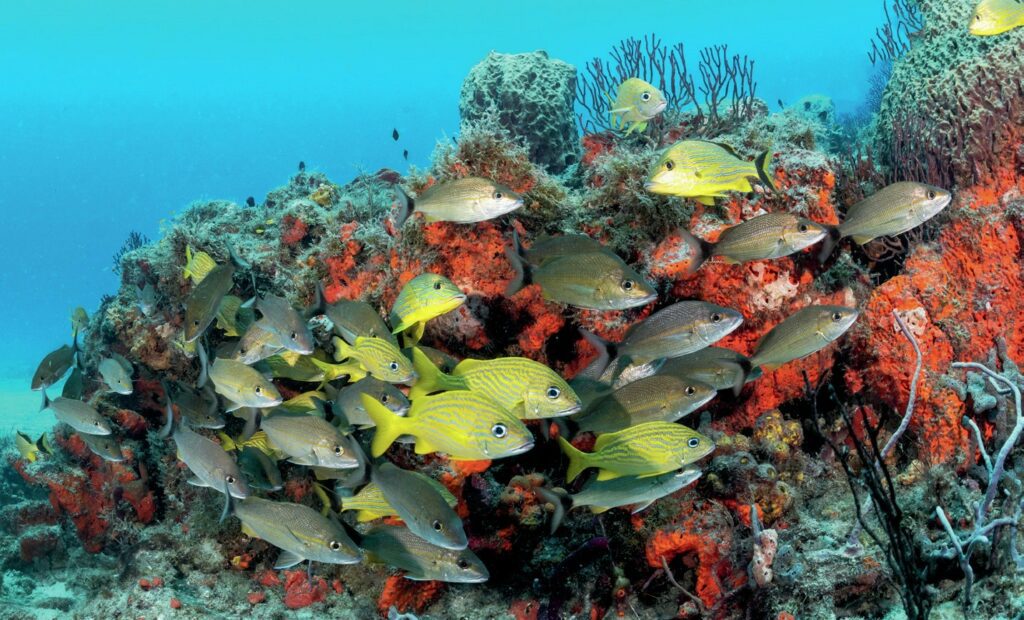
Giants in the North
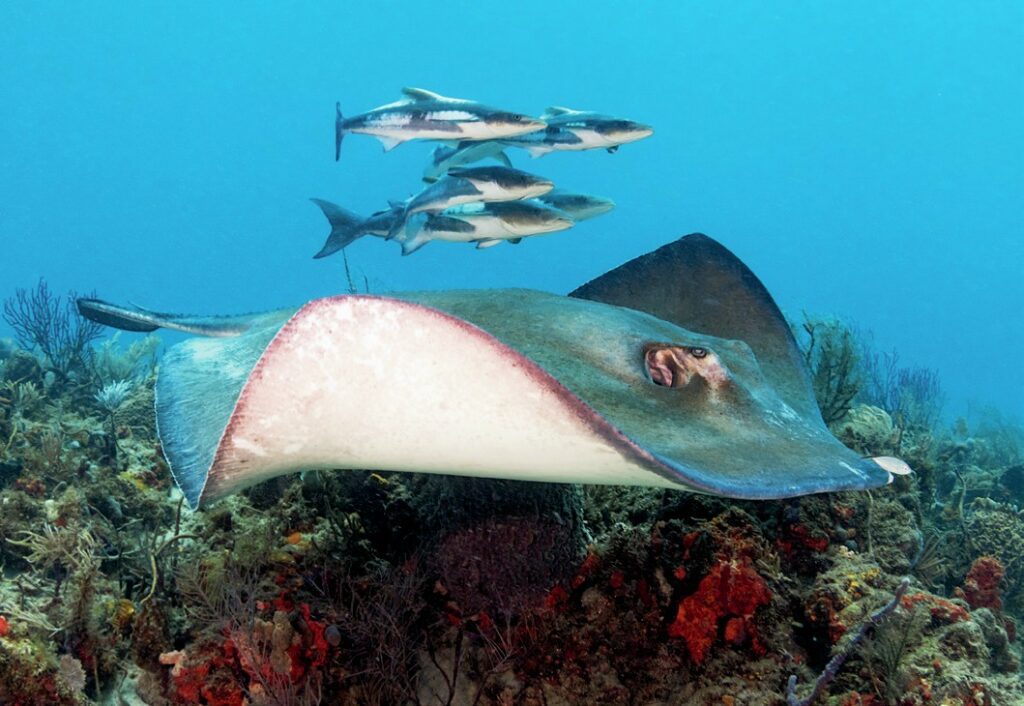
To the North of Lake Worth Inlet, the bottom topography shifts from one primary ridge line to a series of ridge formations running parallel to one another. The westernmost formations beginning just to the south of the inlet are known as North Doubles and South Doubles. As their names imply, instead of one there are two principal west-facing ledges running parallel at two different depths, with a combined relief of 30ft. The lower ledge meets the sand floor around 90ft, and some 50ft to 100ft to the east; the second ledge then rises to within 60ft of the surface before beginning a gradual slope back into the depths.
Moving northward beyond North and South Doubles, the sea floor becomes increasingly convoluted, forming a complex labyrinth of bottom contours of varying heights riddled with deep undercuts. Many of these formations lie in depths of 60ft to 90ft. The largest and most extensive of these commences off Juno Beach, stretching northward over a distance of eight miles before suddenly terminating into the sand at a point even with the Jupiter Inlet.
Collectively referred to as the Juno High Bar, this massive escarpment features the tallest ledge formations off the coast, some rising 18ft straight off the sand bottom. North of it is a secondary ridge line in the 70ft depth range called Tunnels. One of the main features of this site is a huge undercut and archway large enough for divers to pass through.
Compared to ledges farther south, coral and sponge growth on this reef is noticeably sparser. But what it may lack in the color department, the Juno High Bar makes up for in the dramatic. This is the region the locals call the land of the giants, as the marine life generally includes an abundance of sea turtles, Goliath grouper and sharks. It is on this note that I conclude my coverage of Palm Beach Reefs. Next round I will delve into the region’s collection of highly distinctive wrecks. Please stand by.
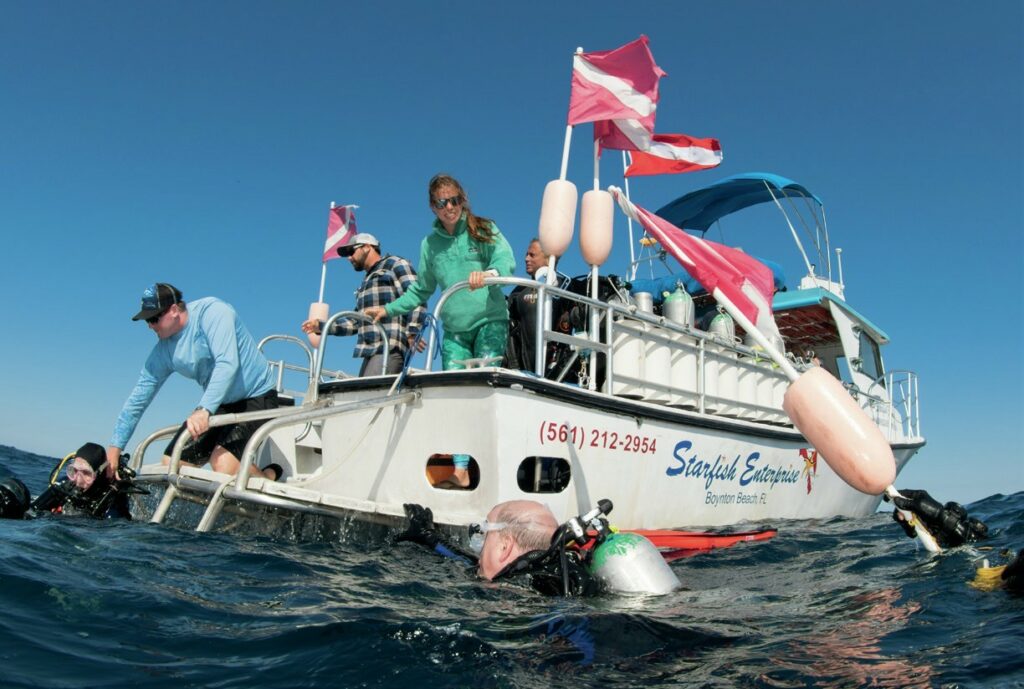
This article was originally published in Scuba Diver North America #12.
Subscribe digitally and read more great stories like this from anywhere in the world in a mobile-friendly format. Link to the article
